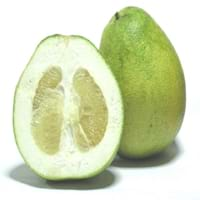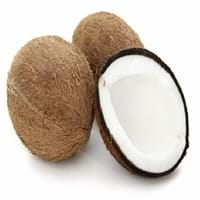Health Benefits
Cancer prevention, Heart care, Prevents Urinary Tract Infection
Acidity treatment, Acts as natural antibiotic, Anti-oxidant properties, Aphonia treatment
General Benefits
Digestive aid, Fights against infections, Flu treatment, Healing of wounds, Helps in weight loss, Treatment of common cold
Anti-inflammatory properties, Body hydration, Boosts immune system, Controls blood sugar levels, Digestive aid, Fights against infections, Flu treatment, Healing of wounds, Helps in weight loss, Maintains healthy cholesterol level
Skin Benefits
Anti-aging benefits, Brightens and lightens complexion
Anti-aging benefits, Heals sunburn, Hydrates skin, Reduces wrinkles, Skin rejuvenation, Skin revitalization, Treatment of skin diseases
Hair Benefits
Promotes longer and healthier hair, Protects hair
Promotes longer and healthier hair, Regulates hair growth, Rejuvenates scalp, Shiny hair, Treatment of dandruff
Allergy Symptoms
Abdominal cramps, Abdominal pains, Diarrhea, Lightheadedness, Nasal congestion, Nausea, Swallowing difficulties, Swelling of mouth, tongue or lips, Vomiting
Abdominal pains, Breathing difficulty, Itching in tongue and other parts of mouth, Nasal congestion, Nausea, Runny nose, Vomiting
Side Effects
Allergic reaction, Dizziness, Stomach pain
Allergic reaction, Indigestion, Weight gain
Best Time to Eat
As a snack in the late afternoon, Don't consume at night and before bed, Eat the fresh ones, avoid mixing with any other foods, don't eat after meal., Morning time (before lunch)
Along with meal, Best if taken as a breakfast (or empty stomach), As a snack in the late afternoon, Morning time (before lunch)
Vitamin A (Retinol)
Not Available
Vitamin B5 (Pantothenic Acid)
Not Available
Vitamin B9 (Folic acid)
Not Available
Vitamin C (Ascorbic Acid)
Vitamin E (Tocopherole)
Not Available
Vitamin K (Phyllochinone)
Not Available
Lutein+Zeaxanthin
Not Available
Phytosterol
Not Available
Calories in Fresh Fruit with Peel
Not Available
Calories in Fresh Fruit without Peel
Not Available
Calories in Frozen Form
Not Available
Not Available
Calories in Canned Form
Not Available
Calories in Jam
Not Available
Type
Citrus, Tropical
Tree fruit, Tropical
Season
All seasons
All seasons
Varieties
Chandler, Cocktail, Cuban Shaddock, Hirado Buntan, Honey, Jaffa Red, Mato Buntan, Pomelit, Reinking, Siamese Sweet and Sweetie
Tall Varieties- West Coast Tall, Laccadiv Micro, Andaman Ordinary, Fiji, Kappadam, San Ramon, Philippines, Spicate, and Pratap. Dwarf Varieties- Chowghat Orange Dwarf (COD) and Chowghat Green Dwarf (CGD)
Color
Green, Pink, Red, Yellow
Brown, Green
Inside Color
Creamy Yellow
White
Taste
Juicy, Sweet
Juicy, Sweetish
Origin
Malaysia, South-Eastern Asia, Thailand
America, India
Soil Type
Clay, Loam, Sandy
Clay, Sand
Climatic Conditions
Warm
Hot, Humid
Facts about
- Flowers of pomelo fruit are used to make perfumes.
- Pomelo tree wood is used for the manufacture of tool handles.
- Life of pomelo tree is around 10 years.
- Height of pomelo can be 15-20 feet.
- Burning coconut's husk helps repel mosquitoes.
- Surveys say that falling coconut kills hundreds every year.
- Coconut water is used as a substitute Blood Plasma & is called "father of modern tissue culture science".
Top Producer
China
Indonesia
Other Countries
Argentina, India, Israel, Mexico, South Africa, Sudan, Thailand, Turkey, United States of America
Brazil, India, Philippines, Sri Lanka
Top Importer
Europe
United States of America
Top Exporter
United States of America
Philippines
Botanical Name
Citrus maxima
Cocos nucifera
Synonym
Citrus grandis
Not Available
Subkingdom
Tracheobionta
Tracheobionta
Division
Magnoliophyta
Magnoliophyta
Class
Magnoliopsida
Liliopsida
Subclass
Rosidae
Arecidae
Order
Sapindales
Arecales
Family
Rutaceae
Arecaceae
Species
C. maxima
C. nucifera
Generic Group
Citrus fruit
Arecaceae
Difference Between Pomelo and Coconut
We might think that Pomelo and Coconut are similar with respect to nutritional value and health benefits. But the nutrient content of both fruits is different. Pomelo and Coconut Facts such as their taste, shape, color, and size are also distinct. The difference between Pomelo and Coconut is explained here.
The amount of calories in 100 gm of fresh Pomelo and Coconut with peel is 38.00 kcal and Not Available and the amount of calories without peel is Not Available and 354.00 kcal respectively. Thus, Pomelo and Coconut belong to and category.These fruits might or might not differ with respect to their scientific classification. The order of Pomelo and Coconut is Sapindales and Arecales respectively. Pomelo belongs to Rutaceae family and Coconut belongs to Arecaceae family. Pomelo belongs to Citrus genus of C. maxima species and Coconut belongs to Cocos genus of C. nucifera species. Beings plants, both fruits belong to Plantae Kingdom.









